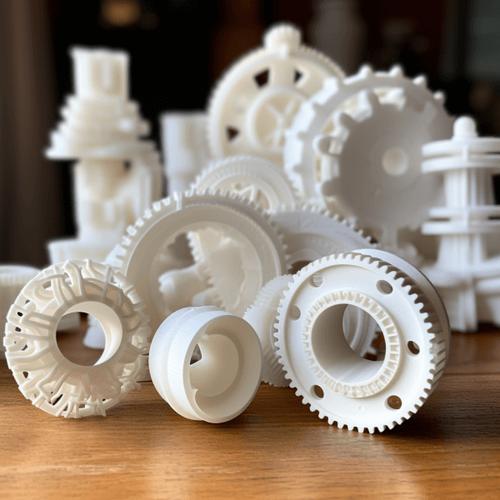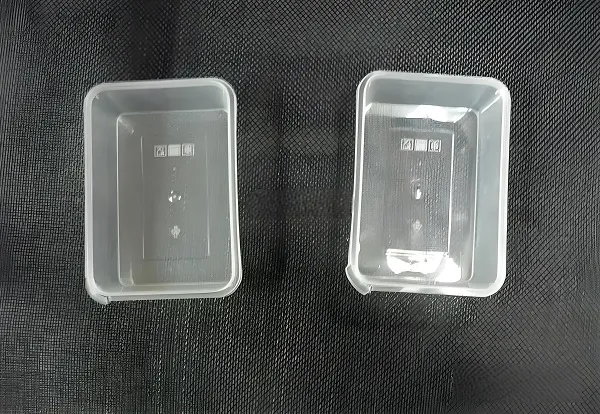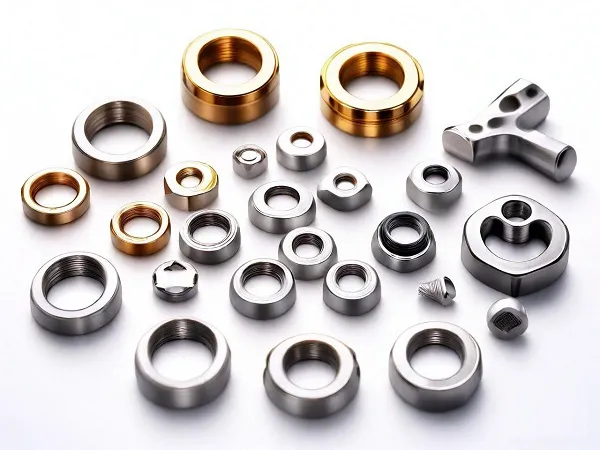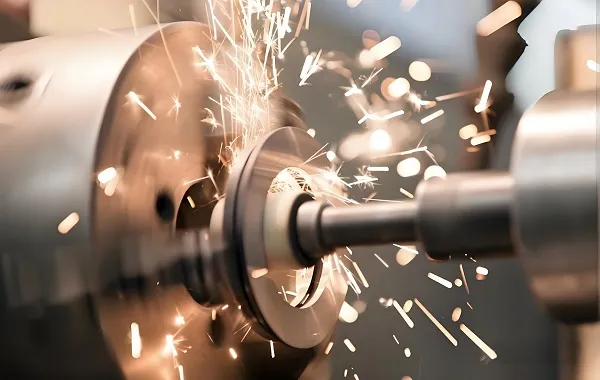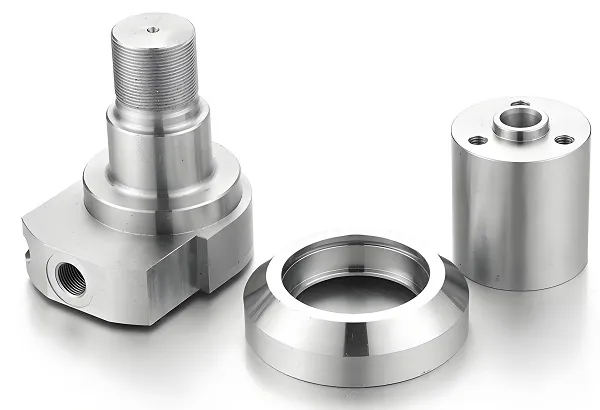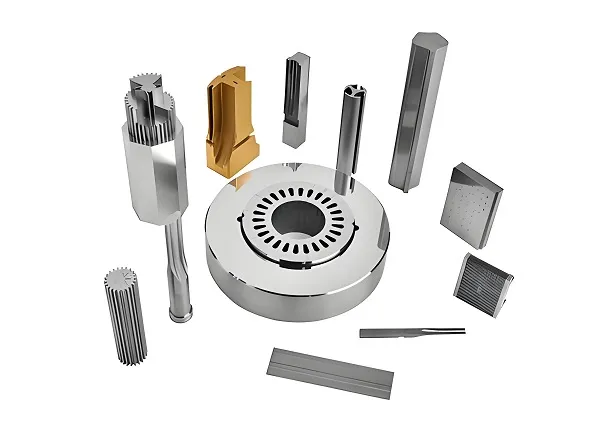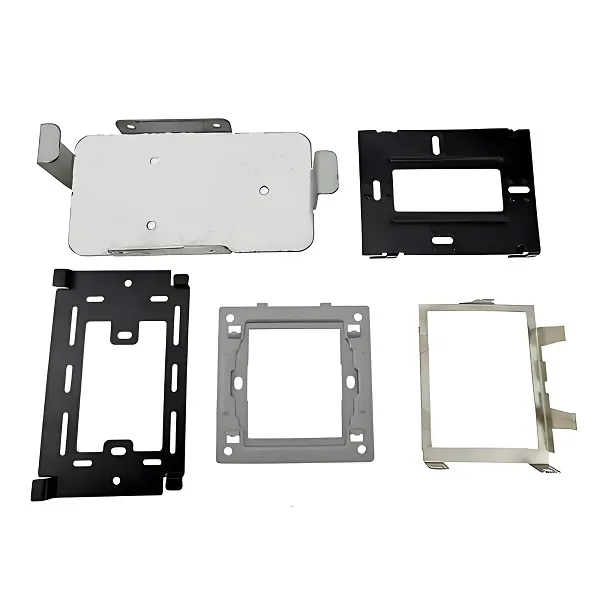1. Why Custom 3D Printed Parts
Custom 3D printed parts have emerged as a superior solution in scenarios where traditional manufacturing struggles to deliver. They provide the freedom to create one-of-a-kind designs that are tailored to exact specifications, including highly complex structures such as internal lattices and hollow geometries that would be extremely difficult or even impossible to produce with conventional methods.
On-demand production is another key advantage, allowing for the creation of parts as needed, which minimizes inventory costs and reduces waste associated with overproduction. Unlike standard off-the-shelf parts, custom 3D printed parts can be adjusted to fit specific sizes, perform unique functions, and meet precise performance criteria. This makes them ideal for prototyping, where rapid iteration is crucial, low-volume production runs that don’t justify the expense of molds, and specialized equipment that requires components with non-standard dimensions or features.
2. 3D Printed Parts Processing Technologies
- Fused Deposition Modeling (FDM): This widely used technology works by extruding thermoplastic filaments through a heated nozzle, which deposits the material layer by layer to build the part. It is known for its cost-effectiveness, making it a popular choice for creating prototypes, functional parts for low-stress applications, and durable components. FDM printers are relatively affordable and easy to operate, and they can work with a variety of materials including PLA, ABS, and PETG.
- Stereolithography (SLA): SLA utilizes a UV laser to cure liquid photopolymer resin, solidifying it layer by layer to form the part. This technology is renowned for producing parts with extremely high detail and smooth surface finishes, making it perfect for applications such as jewelry molds, dental models, and high-precision prototypes. The resin used in SLA comes in a range of properties, from flexible to rigid, allowing for customization of the part’s characteristics.
- Selective Laser Sintering (SLS): In SLS, a high-powered laser is used to fuse small particles of powdered materials, which can be plastics, metals, or ceramics. The laser selectively sinters the powder, bonding the particles together to form the part. SLS is well-suited for creating strong, functional parts with complex geometries, such as gears, brackets, and structural components. It doesn’t require support structures, as the unsintered powder acts as a support during the printing process.
- Binder Jetting: This technology involves depositing a liquid binder onto layers of powdered material, which binds the particles together to form the part. Binder jetting can be used with a variety of materials including metals, ceramics, and sands. It is particularly useful for creating large and complex-shaped parts, and it offers high production speeds compared to some other 3D printing technologies. Post-processing steps such as sintering are often required to enhance the strength of the parts.
3. 3D Printed Parts Processing Flow
- Design: The process begins with the creation of a 3D digital model using computer-aided design (CAD) software. During this stage, designers must consider the printability of the part, including factors such as overhangs (which may require support structures), wall thickness, and overall geometry. The design is refined to ensure that it can be successfully printed and will meet the intended functional requirements.
- File Preparation: Once the 3D model is complete, it is converted into an STL (Standard Tessellation Language) file format, which is compatible with 3D printers. The STL file is then imported into slicing software, which breaks the model into thin horizontal layers and generates a set of instructions for the printer. Parameters such as layer height (which affects detail and print time), infill density (which impacts strength and weight), and print speed are adjusted during this step.
- Material Selection: The choice of material is critical and depends on the intended use of the part. Factors to consider include mechanical properties (strength, flexibility, heat resistance), chemical resistance, biocompatibility (for medical applications), and cost. Common materials include plastics (PLA, ABS, PETG), metals (titanium, stainless steel, aluminum), composites, and resins, each with its own unique characteristics.
- Printing: The prepared file is transferred to the 3D printer, and the selected material is loaded into the machine. The printer then follows the instructions from the slicing software, building the part layer by layer. The printing process is automated, but operators may monitor it to ensure that there are no issues such as material jams or layer adhesion problems.
- Post-Processing: After printing is complete, the part is removed from the printer. This may involve removing support structures (if used), which can be done manually or with the help of tools. The part is then cleaned to remove any excess material or residue. Depending on the material and application, additional post-processing steps may be required, such as sanding to smooth the surface, polishing for a glossy finish, painting to improve aesthetics or provide protection, or heat treatment (for metal parts) to enhance strength.
- Quality Check: The finished part undergoes a thorough quality inspection to ensure that it meets the specified requirements. This includes checking dimensions using precision measuring tools to verify that they match the design, testing mechanical properties such as strength and hardness, and examining the surface finish for defects such as cracks, warping, or rough spots. Any parts that do not meet the quality standards are either rejected or reworked.
4. 3D Printed Parts Materials
- Plastics: A wide range of plastics are used in 3D printing. PLA (Polylactic Acid) is a biodegradable material made from renewable resources such as corn starch, but it has relatively low strength and heat resistance, making it suitable for prototypes and low-stress applications. ABS (Acrylonitrile Butadiene Styrene) is a tough and impact-resistant plastic that can withstand higher temperatures, making it ideal for functional parts. PETG (Polyethylene Terephthalate Glycol) is food-safe, durable, and has good chemical resistance, making it suitable for containers and parts that come into contact with food or liquids.
- Metals: Metal 3D printing materials offer high strength and durability. Titanium is known for its excellent strength-to-weight ratio, corrosion resistance, and biocompatibility, making it widely used in aerospace, medical, and automotive applications. Stainless steel is highly corrosion-resistant and strong, suitable for parts that need to withstand harsh environments. Aluminum is lightweight and has good thermal conductivity, making it a popular choice for aerospace and automotive components where weight reduction is important.
- Composites: Composite materials combine a base material with reinforcing fibers or particles to enhance specific properties. Carbon fiber-reinforced plastics offer high strength and rigidity while remaining lightweight, making them suitable for structural parts in aerospace and automotive industries. Wood-filled filaments contain wood particles, giving the printed parts a natural wood-like appearance and texture, ideal for decorative items and prototypes.
- Resins: Photopolymer resins are used in SLA and similar 3D printing technologies. They come in a variety of formulations, offering different hardnesses, flexibilities, and heat resistances. High-detail resins are used for creating parts with intricate features, while flexible resins are suitable for parts that need to bend or stretch. Some resins are also designed to be biocompatible, making them suitable for medical applications.
5. 3D Printed Parts Applications
- Aerospace: The aerospace industry benefits greatly from 3D printed parts, particularly for creating lightweight structural components that help reduce the overall weight of aircraft, improving fuel efficiency. Custom brackets, housings, and engine components are often 3D printed due to the ability to produce complex shapes that optimize strength and minimize weight. Titanium and other high-performance materials are commonly used to meet the industry’s strict safety and performance standards.
- Medical: In the medical field, 3D printed parts are used to create patient-specific implants such as hip and knee replacements, which are designed to fit the unique anatomy of each patient, improving comfort and functionality. Surgical guides help surgeons plan and perform procedures with greater precision, reducing surgery time and improving outcomes. Prosthetics are also customized using 3D printing, allowing for a better fit and enhanced mobility for patients.
- Automotive: The automotive industry uses 3D printing for prototyping new parts, enabling rapid design iteration and testing before moving to mass production. Custom tooling and fixtures used in the manufacturing process can also be 3D printed, reducing lead times and costs. Additionally, lightweight 3D printed parts are being integrated into vehicles to improve fuel efficiency and performance.
- Consumer Goods: 3D printing has opened up new possibilities for custom consumer goods. Custom jewelry can be designed and printed to match individual preferences, with intricate designs that would be difficult to achieve with traditional methods. Phone cases, laptop sleeves, and other accessories can be personalized with unique patterns or logos. Home decor items such as vases, lampshades, and wall art can also be 3D printed in a variety of styles and materials.
- Industrial: Industrial applications of 3D printed parts include the production of spare parts for machinery and equipment, which can be printed on-demand, reducing downtime associated with waiting for parts to be shipped. Jigs and fixtures used in manufacturing lines to hold and position parts during assembly are often 3D printed, as they can be quickly customized to fit specific production needs.
6. 3D Printed Parts Performance Additions
- Reinforcement: To enhance the strength and rigidity of 3D printed parts, fibers such as carbon fiber or glass fiber can be embedded into the material during the printing process. This creates composite parts that offer superior mechanical properties compared to parts made from pure plastics or resins, making them suitable for applications where high strength is required.
- Surface Coatings: Applying surface coatings to 3D printed parts can improve their durability, aesthetics, and functionality. Paint can be used to change the color of the part and provide a protective layer against scratches and UV radiation. Metal plating, such as chrome or nickel plating, can give the part a metallic appearance and improve corrosion resistance. UV-resistant coatings are particularly useful for parts that will be exposed to sunlight for extended periods.
- Hollow Structures: Designing 3D printed parts with internal cavities or hollow sections is an effective way to reduce weight without compromising strength. This is especially beneficial in aerospace and automotive applications where weight reduction is a key priority. The hollow structures can be designed in a way that distributes stress evenly throughout the part, ensuring that it remains strong and functional.
- Interlocking Features: Integrating interlocking features such as hinges, snap fits, or tabs and slots into 3D printed parts allows for easy assembly without the need for additional fasteners such as screws or bolts. This simplifies the assembly process, reduces the number of parts required, and can improve the overall strength and reliability of the assembled product.
7. 3D Printed Parts Common Questions
- How strong are 3D printed parts?
The strength of 3D printed parts varies significantly depending on the material used. Metal 3D printed parts, such as those made from titanium or stainless steel, can match or even exceed the strength of parts made using traditional manufacturing methods, making them suitable for load-bearing applications. Plastic parts, on the other hand, are generally suitable for low-load uses, although the strength can vary depending on the type of plastic and the printing parameters. Composite materials, which combine plastics with reinforcing fibers, offer enhanced durability and strength compared to pure plastics.
- What’s the maximum part size?
The maximum size of a 3D printed part is determined by the build volume of the 3D printer being used. Desktop 3D printers, which are commonly used for small-scale projects and prototyping, typically have build volumes of around 30cm³, limiting the size of parts that can be printed. Industrial-grade 3D printers, however, have much larger build volumes, with some capable of printing parts over 1 meter in size, making them suitable for large-scale industrial applications. For parts that exceed the build volume of a single printer, it is possible to print them in multiple sections and then assemble them together.
- Is 3D printing cost-effective for large batches?
In general, 3D printing is not the most cost-effective option for large batch production. Traditional manufacturing methods such as injection molding become more economical for high-volume production runs because the cost of creating the mold is spread out over a large number of parts, reducing the per-unit cost. 3D printing, on the other hand, has higher per-unit production costs, especially for large batches, due to the time and material requirements. However, 3D printing excels in small production runs, where the cost of molds is not justified, and for customization, where each part may have unique features.
- Can parts be recycled?
Many 3D printed plastic parts can be recycled. Materials such as PLA and ABS are recyclable, and there are processes in place to collect and recycle these materials. Some 3D printer manufacturers and filament producers offer recycled filaments made from post-consumer or post-industrial waste, promoting sustainability in 3D printing. However, the recyclability of 3D printed parts can be affected by factors such as the presence of multiple materials (e.g., parts with embedded metals or different plastics) and the type of post-processing treatments applied. Metal 3D printed parts can also be recycled, as metal is a highly recyclable material.
If you’re in need of custom 3D printed parts, whether it’s a prototype to test a new design, a small batch of functional components for a specific project, or a unique part with complex features, we’re here to assist you. Simply share your project details, including the desired material, size, and intended use, in the comments section. Our team of experts will provide you with detailed information on available options, cost estimates, and production timelines, helping you turn your ideas into reality. Don’t hesitate to reach out—let’s get started on your custom 3D printing project today!
